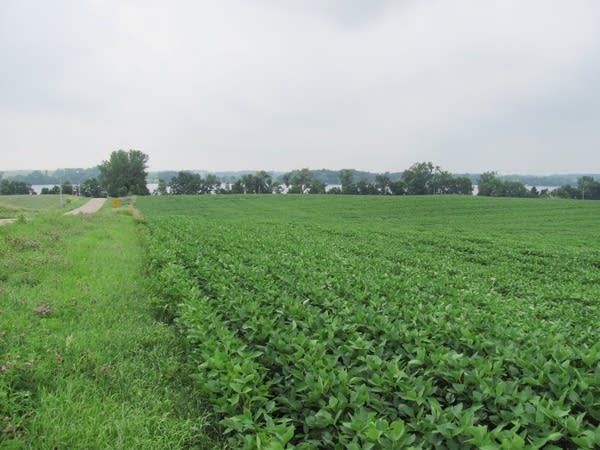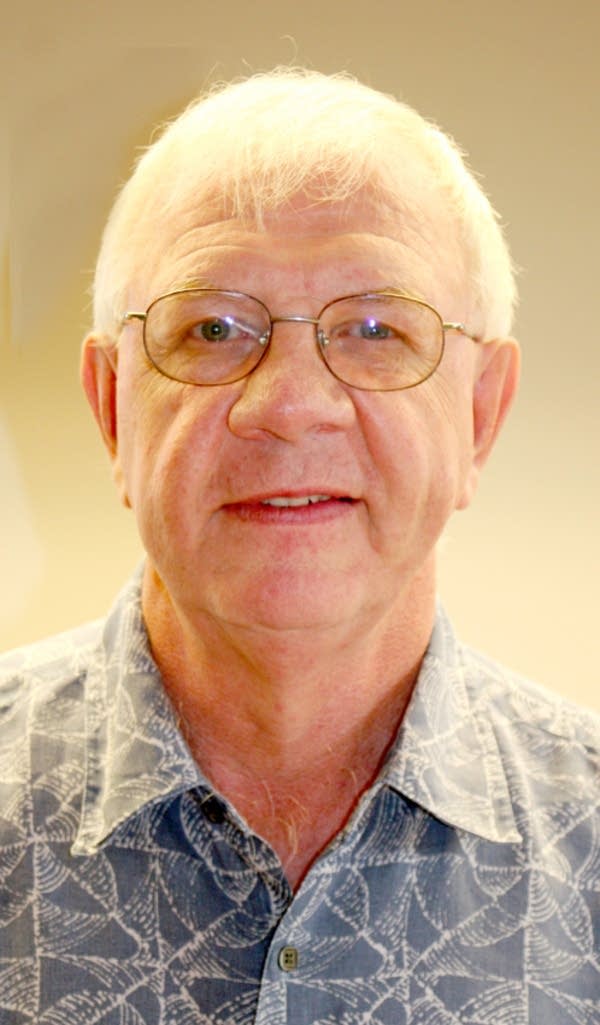Lake stewards band together for impact
Go Deeper.
Create an account or log in to save stories.
Like this?
Thanks for liking this story! We have added it to a list of your favorite stories.

In the 1960s, the water in Lake Volney in Le Sueur County was clear all summer long, says Steve Pany. In fact, he took swimming lessons here as a kid and still has the American National Red Cross certificate to prove it.
Now, the seasonal cabins that dot the small, 283-acre lake have been joined by large suburban-style homes with rolling lawns. Most of the surrounding land that drains into the lake is used for farming. Lake Volney — designated as "impaired" by the Minnesota Pollution Control Agency — is so full of phosphorus the algae starts early each summer and has included deadly cyanobacteria, known as blue-green algae. A dog drank from the lake 10 years ago and died. The water quality became so poor, in fact, that in 1998, Pany and his brothers sold the family cabin their parents had bought three decades earlier.
Though Pany no longer owns property on the lake, he's still attached to it. He fishes here and as an accountant who is treasurer of the Lake Volney Association, he voluntarily works to clean up the water. The association has made a difference. It partnered with the county to hire a "lake detective" to assess Volney's patterns and problems, to move the public beach up from the lake and install a vegetative buffer and portable toilet and to install new culverts, which connect to Gorman Lake and eventually the Cannon River.

It hired a seiner to remove approximately 100,000 pounds of carp from the lake, encouraged residents to install rain gardens and agitated for local farmers to build more buffers. Now, it's trying to find a way to buy a piece of property to expand a wetland, considered the "missing link" to reducing nutrients that flow into the lake.
Turn Up Your Support
MPR News helps you turn down the noise and build shared understanding. Turn up your support for this public resource and keep trusted journalism accessible to all.
When an association member lowers a Secchi disk, which measures water clarity, he can see an average of 12 feet down. A few decades ago, he would have been able to see just over three feet. "We've come a long way toward having the lake usable during the summer," says Pany.
These sorts of efforts are typical of lake associations across the state, which work on the local level to solve local problems. Sometimes those problems involve leaking septic tanks that contribute to high phosphorus levels; sometimes they are matters of lax zoning enforcement, zebra mussels or curly-leaf pondweed. Usually the members are volunteers working with a small pot of money collected through dues. They may have success, but their efforts can only go so far and often frustration sets in when trying to affect larger issues, like farm policy or shoreline development standards.

That's where a new collaborative comes in. More than a dozen coalitions of lake associations (COLAs) are forming the Minnesota COLA Collaborative to have a greater impact on policies that affect lakes and water quality. The group plans to meet this fall to formalize its bylaws and elect a board and officers.
"We figured out that we could have the most strength in numbers," says Dan Kittilson, president of the Hubbard County coalition, one of the brains behind the effort.
Members of the network will be able to share information, join forces on educational campaigns, have an influential voice at the Legislature and draw bigger grants for projects like the prevention of aquatic invasive species. It's a unique approach to addressing water quality issues in the state, especially hard-to-regulate pollutants like yard and farm runoff.
At first, Kittilson, who lives on Little Sand Lake near Park Rapids, was looking at establishing a regional coalition, but the effort quickly blossomed to include associations from across Minnesota. He asked the advocacy group Minnesota Waters to facilitate recruiting and organizing. A group website is in the works.

"There are a lot of COLAs out there working individually," says Kittilson. "We felt that if we could get together, we would have a stronger voice and be able to support each other." He estimates that the collaborative could represent 40,000 to 50,000 people and most, if not all, of the 15 or so COLAs in the state.
Even at its fledgling stage, the group has tried to flex a bit of muscle. "We worked this year on the variance standard," says Kittilson, referring to his group's attempt to alter a bill that added flexibility to the standard by which cities grant zoning exceptions. Another priority is supporting new shoreline development standards, which govern how and where cabins and other structures can be built. The DNR recently came up with a revised set of rules, but it was rejected by former Gov. Tim Pawlenty on his way out of office. "We're trying to get those through," Kittilson says.
"We felt that if we could get together, we would have a stronger voice and be able to support each other."
While the collaborative hopes to affect larger change, there has been some disagreement among members over how to couch those efforts. "There are some who do not want to use the term 'lobbying,'" says Molly Zins, a program director for Minnesota Waters. "This is a continuing discussion for the group."
Douglas County Lakes Association president Bonnie Huettl, who lives on Lobster Lake near Alexandria, is another force behind the collaborative effort. "We will always be watching what's going on in the Legislature as far as lake issues go," she says. "That is part of our mission statement, looking to enhance the waters, repair the waters. Water is our big deal. We do want to influence local senators and representatives. And if you can give them the information they need ... Some call that lobbying. I call it getting the word out."
On a sunny morning on Lake Volney, Pany and another association member, Bob Gullickson, along with Lauren Klement from Le Sueur County Environmental Services, enjoy iced tea and homemade banana cake while people in fishing boats cast for the walleye the DNR stocks in the lake.
Gullickson thinks the COLA collaborative is a great idea. "It's easier to get grants if you're a bigger organization," he says, noting that a larger coalition will draw more attention to the accomplishments of lake associations. "You can hire PR people in order to show the impact."
"This is a very active lake association," Klement says of the Volney group, which was named association of the year for 2011 by Minnesota Waters. "It's extremely helpful. Having active citizens is what gets things done. They can be powerful."
Return to Ground Level: Cleaning Minnesota's Water »
Dear reader,
Political debates with family or friends can get heated. But what if there was a way to handle them better?
You can learn how to have civil political conversations with our new e-book!
Download our free e-book, Talking Sense: Have Hard Political Conversations, Better, and learn how to talk without the tension.





